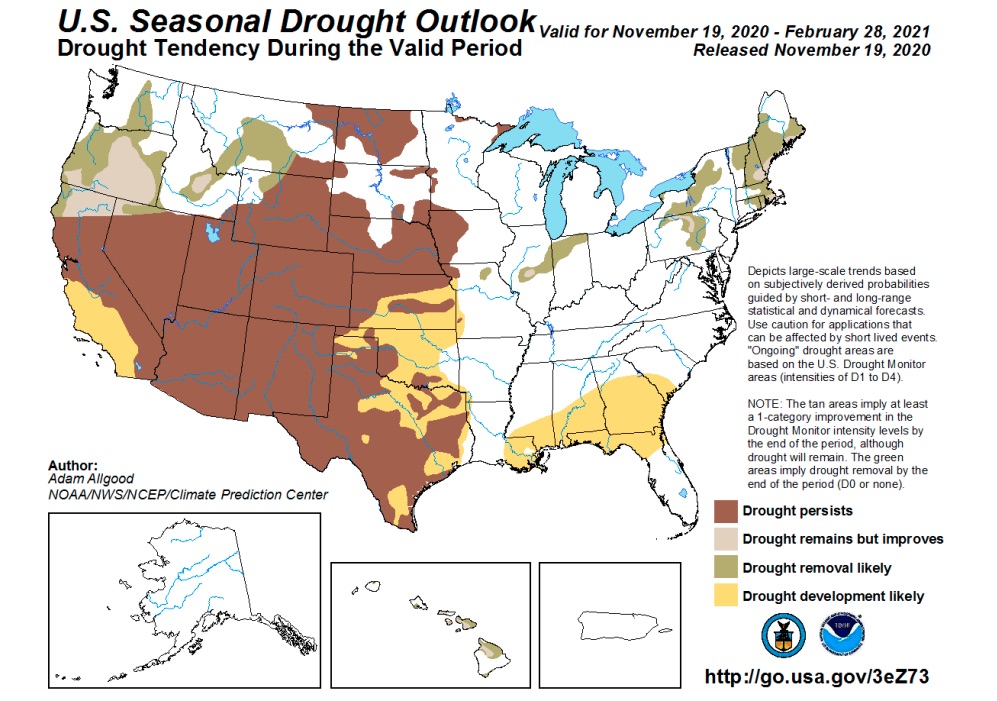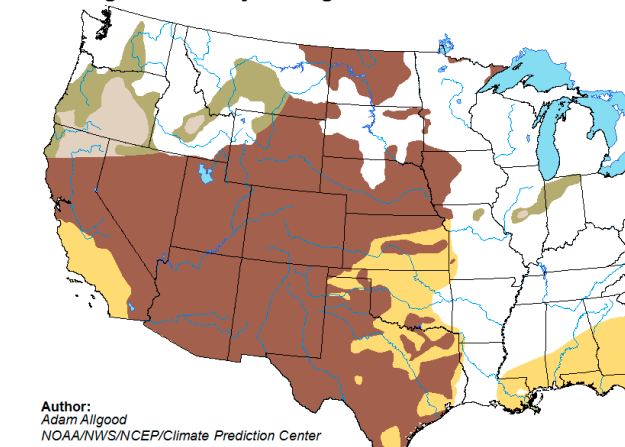The latest outlook from the National Oceanic and Atmospheric Administration suggests that California’s persistent drought-like conditions could last through the winter and into spring, possibly fueling another grueling fire season in 2021.
Currently, three-quarters of California is experiencing at least moderate drought conditions.
“Keep in mind, we’re coming off the driest May-through-October period, statewide at least, across California, Arizona and New Mexico,” said Mark Svoboda of the National Drought Mitigation Center in Nebraska.
Forecasting three to four months out is a dodgy proposition for scientists, but NOAA’s modeling shows the likelihood of relatively dry weather through February. The current La Niña conditions — colder-than-normal waters in the tropical Pacific Ocean — have been a seeming harbinger of scant precipitation in California in the past, though the connection is not reliable.
“Drought is very difficult to predict,” Svoboda said. “When you get down to real specifics, it really comes down to the weather and the interface between the atmosphere and the ground.”

Svoboda says he sees increasing evidence that the warming climate is changing the behavior of droughts, just as it’s changing the behavior of hurricanes and wildfires.

